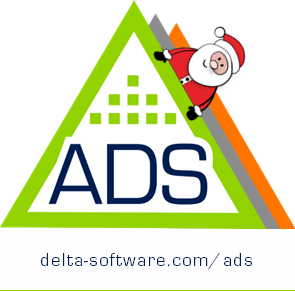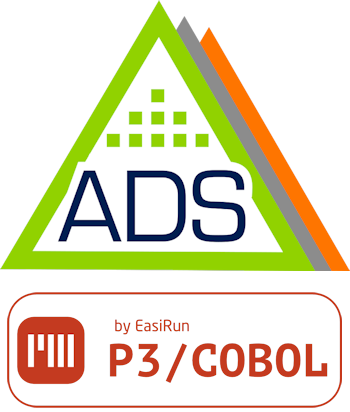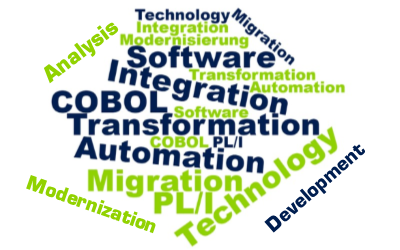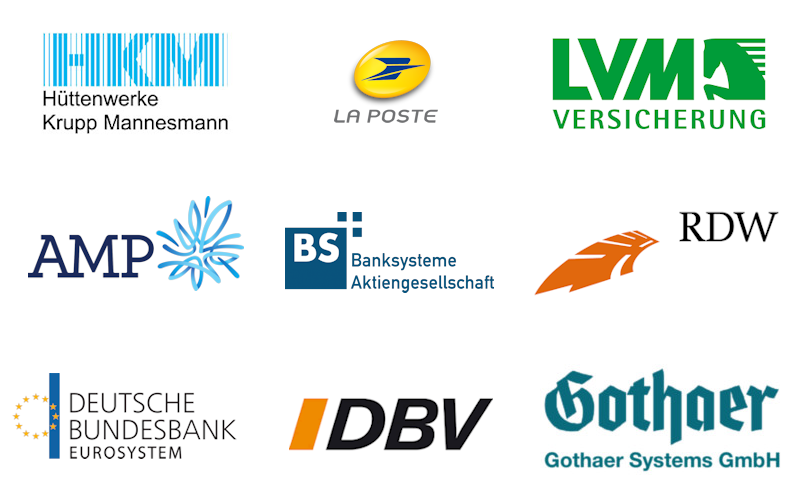For more than a decade the Liechtensteinische Landesbank has been successfully using Delta ADS for COBOL & PL/I for their mainframe applications. The applications, developed using Delta ADS, form the backbone for both the Liechtensteinische Landesbank’s internet and GUI applications.
The Universal Banking Solution
The Liechtensteinische Landesbank has used Delta ADS to develop a complete banking solution that runs on IBM VSE. The application comprises 1700 batch programs and 2,400 online programs. Around 1,500 of these online programs are Delta OSP transactional programs. A further 900 programs, also generated with Delta ADS, provide services that are used by GUI clients developed using Smalltalk. The same services are also used by the Liechtensteinische Landesbank for their Windows-based internet banking solution. The secret behind their success is that the Liechtensteinische Landesbank develops the service once using Delta ADS and then generates them for both IBM VSE and for Microsoft Windows.
“Without Delta ADS we would never have been able to develop and port the GUI client/server and Internet solutions so quickly and efficiently – from Microsoft MS-DOS to IBM OS/2 and then onto Microsoft Windows!”
Willi Caluori, Manager Software Architecture and Support, Liechtensteinische Landesbank
SCORE Adaptive Bridges Generates Bespoke Data Services
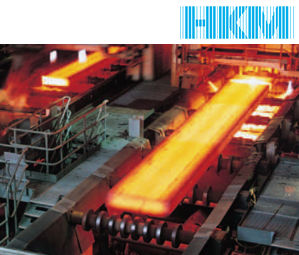 Hüttenwerke Krupp Mannesmann (HKM) – “Hüttenwerke“ is German for steelworks – has been using Delta’s development tools for more than 25 years and has now once again selected a new tool from Delta. HKM will be using the new service enablement tool SCORE Adaptive Bridges from Delta Software Technology as the core development tool for their “Online Steelworks” project. The goal of this ambitious project is the modernization and enhancement of the online system for the management and control of the central steel production processes.
Hüttenwerke Krupp Mannesmann (HKM) – “Hüttenwerke“ is German for steelworks – has been using Delta’s development tools for more than 25 years and has now once again selected a new tool from Delta. HKM will be using the new service enablement tool SCORE Adaptive Bridges from Delta Software Technology as the core development tool for their “Online Steelworks” project. The goal of this ambitious project is the modernization and enhancement of the online system for the management and control of the central steel production processes.
Hüttenwerke Krupp Mannesmann’s plant is located in Duisburg, the steelmaking heart of Germany's Ruhr industrial region. With its 3,250 employees, the company produces significantly more than five million tonnes of steel there each year, equating to approximately every 8th tonne of crude steel produced in Germany.
HKM has selected SCORE Adaptive Bridges to generate the approximately 450 data access servers to manage all aspects of data access to the production data. All of the date required by the “Online Steelworks” project Is stored in an Informix database running on 64-bit Prime Power servers from Fujitsu Siemens under Solaris. SCORE Adaptive Bridges reduces the software development required for the data access to a simple declaration of the access structure. Equally simple as the creation is the subsequent maintenance. This allows HKM to match the server to the exact requirements of the application, and so to define as few, or as many, data access servers as the application needs. The design of the application and the assembly of the appropriate application architecture are independent of the number of servers and their implementation.
The complete data access code is 100% automatically generated by SCORE Adaptive Bridges and made available as custom services that meet the exact needs of the specific client programs that are being modernized and enhanced for the project. By the way, these online client programs will also be generated, for which HKM’s will be using the Delta products SCOUT² and Delta ADS for COBOL & PL/I that have been successfully used by HKM for many years. HKM works with clearly defined interfaces between the clients and data access services, enabling HKM to optimize their complete development process.
"One of the key reasons we have selected SCORE Adaptive Bridges is that we can make our mission-critical applications available as services that we can quickly and easily reuse – without any extra effort – in other contexts, for example in a Service-Oriented Architecture, Enterprise Portals etc."
Gerhard Batiajew, CIO, HKM
HKM has already completed 11 projects with a predecessor product to SCORE Adaptive Bridges. Example projects include:
- A long-term archive of production statistics
- A calculation system for raw materials planning
- An administration system for transport systems within the plant
- A shipping logistics system in co-operation with the port of Rotterdam
These projects have already demonstrated the significant value to application development of completely generating the data access.
About HKM Hüttenwerke Krupp Mannesmann
Since its formation in 1990 by Krupp Stahl AG and Mannesmannröhren-Werke AG, HKM has increasingly specialized in the production of slabs for flat products and in steel rounds for tube-making. The range produced thus corresponds predominantly to the needs of the present-day shareholders – Thyssen Krupp Stahl AG (50%), Mannesmannröhren-Werke AG (20%) and Vallourec & Mannesmann Tubes SA (30%). HKM produces more than 1,000 different grades of high-quality steel that meet the most stringent quality specifications, for example, those demand by the automotive industry.
Download Language: Englisch - Version: MT21037.02

Hüttenwerke Krupp Mannesmann (HKM) - "Hüttenwerke" is German for steelworks - has been using Delta´s development tools for more than 25 years and has now once again selected a new tool from Delta.
Read moreFurther Information
You can profit from your proven IT applications with SCORE Adaptive Bridges. If you would like to learn more about how Delta can help you then please contact your local sales representative.

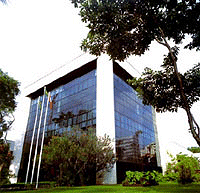 Grupo Edson Queiroz selects generator-based tools from Delta Software Technology for major migration project from Bull DPS7 to UNIX.
Grupo Edson Queiroz selects generator-based tools from Delta Software Technology for major migration project from Bull DPS7 to UNIX.
The Edson Queiroz Group (GEQ) is one of Brazil's leading companies, employing 14,000 people in 16 companies. Their challenge was to reduce migration costs and risks while maximizing quality in a project to migrate several thousand programs from Bull DPS7 mainframes with an IDSII Codasyl database to UNIX platforms with an Oracle relational database.
Using the standard Delta products Delta ADS for COBOL & PL/I and SCOUT², combined with project-specific generators built using the ANGIE frame-based generator technology allows GEQ to perform an automated migration – in the least possible risk and duration, while achieving a high level of quality.
"We have been impressed by the close co-operation and assistance of the whole Delta team throughout the evaluation period and pilot project."
Alberto Moreira, Systems Development Manager, GEQ
The mission critical applications at GEQ have been developed since the early 1990s using the ADS code generator for online and batch programs. The applications are currently deployed on Bull DPS7 mainframes using the TDS7 TP monitor. The IDSII Codasyl database on DPS7 is accessed using native IDSII commands coded throughout the ADS programs.
Following a strategic review by GEQ the decision was made to move the existing applications from the Bull DPS7 mainframes to a new UNIX platform. The IDSII database was to be replaced by an Oracle database on UNIX.
The overall risk and effort for the migration had to be as low as possible. Based on their previous experiences using development tools, GEQ was convinced that an automated approach to the migration was the best approach.
After asking a number of companies to propose solutions for their migration project, GEQ selected the approach proposed by Delta Software Technology as the best match to their requirements.
A team from Delta worked closely with GEQ to analyze the existing applications and technical infrastructure to identify the best way of proceeding. The solution proposed to GEQ was a mixture of the standard Delta products ADS and SCOUT², combined with project-specific generators created using Delta's state-of-the-art ANGIE frame-based generator technology.
"Delta worked with us to study and understand the current situation and then define the best migration strategy."
Alberto Moreira, Systems Development Manager, GEQ
A pilot project performed for GEQ by Delta successfully proved the concept and showed how the GEQ applications could be migrated in a sequence of carefully controlled and verifiable steps:
- Install the SCOUT² development platform to offload development and migration work from the Bull DPS7 to a more productive PC-based environment.
- Use ADSplus to migrate the applications from the previous ADS development product to the latest version.
- Run Delta's automated discovery tools to analyze the existing applications to understand IDSII usage and load XML-based project repositories.
- Use project-specific generators developed using ANGIE to (1) create database independent ADSplus data access servers; (2) automatically replace IDSII commands by neutral access to the new data access servers.
- Regenerate the applications on DPS7 using the existing IDSII database but now accessed using the data access servers.
- Migrate database from IDSII to Oracle on DPS7.
- Regenerate applications on DPS7 with the data access servers targeted for Oracle.
- Regenerate applications for UNIX and Oracle.
The careful step-by-step approach allows GEQ to manage the large migration project at a detailed level. The migration plan also leverages GEQ's existing DPS7 environment and technical skills to perform the majority of the migration and testing work. By the time the final stage is performed and the application is regenerated for UNIX and Oracle the vast majority of the testing has already been performed.
"Using Delta's products and services guarantee that our applications are independent of the deployment platform and database product – a critical success factor for GEQ."
Alberto Moreira, Systems Development Manager, GEQ
Download Language: Englisch - Version: MT21011.04

Grupo Edson Queiroz selects generator-based tools from Delta Software Technology for major migration project from Bull DPS7 to UNIX
Read moreDownload Language: Englisch - Version: MT21013.04

Grupo Edson Queiroz selects generator-based tools from Delta Software Technology for major migration project from Bull DPS7 to UNIX
Read more
 DBV-Winterthur
DBV-Winterthur
The DBV-Winterthur insurance company is one of Germanys’ leading insurance groups. The focal point of their product range is life assurances followed by indemnity and health insurance.
Initial Situation
In 1994, DBV (Deutsche Beamtenversicherung) and Winterthur insurance merged. Both companies dealt with property insurances; DBV-Winterthur was also active the personal insurance market. The IT worlds of each company were very different: while DBV used UNISYS OS/2200, Winterthur relied on IBM MVS and CICS.
The Ambitious Goal
The IBM platform used by Winterthur was selected as the future IT platform.
The property insurance applications from Winterthur, already running on this platform, were to be retained; hence for this line of business only DBV's data needed to be migrated. For the personal insurance line of business both, the DBV's applications and the data needed to be migrated from the UNISYS to IBM platform.
Project Realization
The excellent architecture of DBV's personal insurance applications significantly simplified the migration. The previous application was developed with the Delta/ADS application development product.
As a result the changeover from the old AVS data storage system on UNISYS to VSAM on IBM only required that the ADS file access macros had to be modified. The application programs only needed to be regenerated for the new IBM target platform. No alterations were made to the application programs because of the target platform portability provided by ADS.
Even the change of the TP monitor did not require alterations to the application programs, the screen layout descriptions were automatically converted to the ADS layout description format. The online control program used to connect to IBM CICS, which had been hand-written by the DBV developers, was rewritten using ADS.
Result
Using the Delta generator technology, based on a strict separation of the technical infrastructure code from the actual application code, the migration was completed on schedule, smoothly and above all, without alteration to the core application programs.
 Conversions – Day-to-Day Business at the Datenzentrale Baden-Württemberg
Conversions – Day-to-Day Business at the Datenzentrale Baden-Württemberg
Silent Conversions Thanks to Delta
Day-to-day business involves not only regular development and maintenance work, but constant adaptation of the applications to the system environment as well. With the ADS generator system, the Datenzentrale Baden-Württemberg has time and again managed to carry out these migrations silently, cheaply, and quickly.
Datenzentrale Baden-Württemberg
The Datenzentrale Baden-Württemberg, founded on September 1st 1971, supplies in cooperation with the municipal and local data computing centers 1,111 communities and most of the 35 counties of Baden-Württemberg with application software for registration management, taxes, building authorities, social affairs, human resource management and accountancy; for the motor vehicle registration, management information systems etc. The most current projects are special offers for e-government and e-authorities services.
Thus, the Datenzentrale Baden-Württemberg is the market leader in providing municipal branches software in Baden-Württemberg. However, numerous contented users more and more avowed the advantage of sophisticated software. The number of customers from other federal states increases consistently. Many communities of the federal state of Sachsen are supplied with this software as well.
Of its 140 members of staff, 80 are engaged in the field of software development and maintenance. They use an IBM system under VM/CMS for MVS/CICS and DB2. Changes have to be made in response to new technical and statutory requirements. In addition, new techniques have to be implemented in the applications, and the applications have to be incorporated into new the environments.
Entry: conversion to dialog
At the end of the seventies, a decision was made to convert the batch process as far as possible to dialog. The OSSY dialog system of Heyde & Partner in Bad Nauheim was chosen for this. With OSSY, Delta/ADS came to the data centre. The advantages of Delta/ADS were soon recognized, and were fully exploited. Standardization of the interfaces and the program frameworks in macros made development very flexible and independent of the physical environment. Thus, for example, there was no need for developers to undergo CICS training. And one great advantage in the maintenance of applications resulted from the introduction of structured programming, supported by Delta/SPP, long before COBOL 85 and VS COBOL 2 from IBM.
This conversion, which took less than three years, laid the basis for future silent migrations - silent in that the application programmers were not involved in them. As a rule, a two-man team prepared these conversions in a short time by adapting and testing the macros for interfaces and program frameworks. There was no need for the programmers to be trained. And development of the application did not have to be disturbed or interrupted by a large-scale migration project.
Migration from COBOL 74 to VS COBOL 2
There were three reasons for converting the existing applications to VS COBOL 2: the programs would be re-entrant-capable under CICS; the address space would be expanded under MVS/XA to 16 MB; and this would lead to improved performance.
New addressing techniques with base locators had been introduced, together with new CICS commands. Because of the relocation and standardization of the I/O interfaces in macros and program frameworks, the time spent on changing and testing about twenty macros was reduced to four man-weeks. Following this, about 30,000 programs were regenerated in six months. The results of the generations carried out overnight were checked the next day without the need to interfere with the day's business. Without Delta, the data centre would have had to set aside several years for this conversion alone.
With ADS, about 30,000 programs were migrated, and performance was improved, in only six months. The programs are now running three times faster than they were before.
Change from release CICS 1.7 to 2.1, 3.3, and 4.1
With this conversion, as in the case of the COBOL migration, the macros were changed in one day, and were thereafter tested in no more than four. The required changes never came to the surfaces. And the migration went by almost unnoticed. Neither a project nor a budget was needed for the migration of about 30,000 programs.
Other platforms of the OSSY dialog control system
Initially, the OSSY dialog control ran for the MVS/CICS environment. Later, the AS/400, VAX, and Windows platforms were added. In some cases, these platforms require drastic changes to the control logic. As the interface between the application modules and OSSY has also been implemented in the form of Delta macros, it is sufficient here as well merely to adapt and test these macros, and to regenerate the applications.
Conversion to IMS/DB
The file interface to VSAM has been implemented with Delta/FILE. This has also meant a reduction in the amount of training needed for programmers in the use of the GET and PUT logical I/O commands. In addition, the introduction of IMS/DB and the use of IMS/DB macros from Delta/ADS also meant that the interface to the application programming remained unchanged. In one year, about six hundred programs have been converted to IMS/DB and rewritten. As IMS/DB has proved to be too expensive and its administration to involve too much time and effort as far as the data centre is concerned, its introduction has been stopped.
Thanks to ADS, however, this experiment with IMS/DB was easy to cancel, and it was possible to continue to use the six hundred programs involved. Almost overnight, they were changed back to VSAM by means of regeneration.
Introduction of DB2
Two years ago, it was decided to develop the application for population matters with DB2. Once again, the question was whether to page out the SQL commands to macros, or to implement them in the programs. The Datenzentrale Baden-Württemberg opted for the Delta/FILE interface for DB2, because this solution did not require the developers to undergo extra training. In doing so, it accepted the need to generate separate macros for updates. Specifying the minimum number of places to be changed in the Delta standard macros and documenting the changes in the macros concerned are part of standard program development work. By the end of 1998, about 1,000 dialog programs will have been developed, using eight developers and two macro programmers.
The year 2000 changeover
It was established with the inventory and a first roughly estimated analysis, that some data portfolio can remain with a 2-digit date at first others however must be expanded. Simultaneously, the temporal decoupling of the changeover of the data stock and programs as well as a minimal blocking time of the programs to be changed was a matter of top priority for the data centre.
10,000 modules are approximately concerned. Also here, the usage of Delta products proved to be a significant advantage with the standardization of interfaces: the file macros were extended according to the time-window technology. Hence, the input of the date was extended to four digits, while the output of the date was minimized to two digits. A runtime key was in charge of managing of whether a particular files was to be altered or not.





